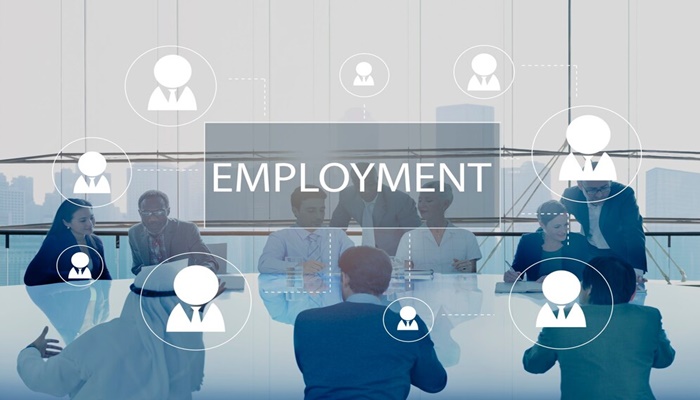Returning to work after parental leave marks a significant juncture in an employee’s life. The period following parental leave is a sensitive time in the career trajectory. People’s priorities shift, needing them to re-evaluate work-life integration. Re-entering the workplace brings up a fresh set of challenges.
Emotional Transition: New parents often grapple with complex emotions. Guilt over leaving their child and anxiety about balancing work and family are common. There is also a sense of isolation upon returning to a previously familiar workplace. Employees may fear being perceived as less committed to their jobs or worry about missing important milestones in their child’s life.
Logistical Hurdles: Securing reliable and affordable childcare is a major source of stress for many returning parents. Childcare is full of unexpected disruptions. New parents must adjust to new routines both at home and at work, adding logistical challenges. Stephanie Carr of NatWest highlights the critical issue of daycare costs and the lack of adequate support for working parents, emphasizing that the current system often fails to support women who wish to pursue careers.
Time Management: Juggling work responsibilities with the demands of a young family can stretch the limits of even the best time manager. There are feeding schedules, appointments and unpredictable infant care needs which can be overwhelming. These can significantly impact an employee’s focus. As Diana Paredes, CEO of Suade Labs, experienced, even those in leadership roles can feel a strong sense of missing their child when apart, underscoring the emotional and professional balancing act.
Professional Reintegration: Employees returning from leave may feel like newcomers to a team that has continued to evolve in their absence. They might need to catch up on changes in projects, team dynamics, and organizational priorities. Concerns about maintaining their professional identity and demonstrating their continued value to the company can also be significant.
Parental Leave & Return To Work Policies
Historically, employer policies on parental leave & return to work have focused on legal compliance. Approaches included shorter periods of unpaid or partially paid leave, with limited provisions for flexible work or reintegration support. These policies often stemmed from a more traditional view of parental roles. Work-life balance was not seen as essential for employee satisfaction and retention. There was a notable absence of robust return-to-work programs and a lack of formalized support structures. Thus organisational focus was often on the minimum requirements to avoid legal repercussions, rather than proactively addressing the needs of new parents. The assumption was that employees would seamlessly transition back to their previous roles and responsibilities without significant adjustments or support.
Companies today recognise the evolving needs of their workforce. Many are adapting their parental leave and return-to-work policies. This shift is driven by several key factors:
Attracting & Retaining Talent: The Bright Horizons study showed a significant likelihood of new parents switching employers for more family-friendly options, highlighting the cost of not addressing these needs. By implementing supportive policies, organizations aim to mitigate employee turnover and retain their experienced workforce.
Family benefits are increasingly becoming a key component of a company’s employee value proposition. Firms like American Express and Ikea US have expanded their paid parental leave as part of their efforts to brand themselves as family-friendly workplaces and attract top talent.
Promoting Gender Equity: Unequal parental leave policies can perpetuate the idea that women are the primary caregivers and can negatively impact women’s career progression. Companies are increasingly adopting gender-neutral parental leave policies to encourage fathers and non-birthing parents to take leave, thereby normalizing caregiving responsibilities and fostering a more equitable workplace. Intel’s expanded paid leave aims to support the whole family and promote more equity in caregiving.
Improving Employee Well-being and Productivity: Recognizing the stress associated with returning to work after parental leave, companies are implementing programs to ease the transition and support employee well-being. Flexible work arrangements, childcare assistance, and return-to-work coaching are designed to reduce stress and enable parents to return to work feeling more supported and engaged, ultimately leading to increased morale and productivity.
Some specific ways in which organisations are adapting their return-to-work policies are:
- Extended Paid Leave: Companies like American Express, Ikea US, Etsy, Ernst & Young (EY), Intel, and Exelon have significantly increased the duration of paid parental leave for both mothers and fathers, recognizing the importance of bonding time and recovery.
- Flexible Work Arrangements: KPMG’s emphasis on a culture of flexibility, PNC Bank’s telecommuting and reduced schedule options, and Intel’s part-time return with full-time pay demonstrate a growing recognition of the need for work-life balance.
- Childcare Assistance: PNC Bank’s onsite childcare centers and American Express’s back-up care program address the critical logistical challenges of childcare.
- Return-to-Work Programs: Companies like KPMG, PNC Bank, and others mentioned by Bright Horizons are developing structured programs to support the reintegration process, often incorporating feedback from returning parents. Duane Morris’s “Ramp Down/Ramp Up” policy is an innovative example of easing the workload transition.
- Individualized Support: KPMG’s provision of individualized coaching highlights the trend towards recognizing and addressing the unique needs of each returning parent.
Opportunities for Returning Employees
Experts advise new parents returning to work to rebrand their time away as a period of growth and evolution. What does this look like?
- Enhanced Skill Development: Returning parents may find they have improved multitasking abilities, problem-solving skills, time management capabilities, and emotional intelligence.
- Career Re-evaluation and Prioritization: Parenthood may shift a person’s perspective on what they value in their work and life, leading to a more intentional approach to their career path.
- Increased Empathy and Leadership Skills: For employees in leadership roles, experiencing the challenges of returning to work after parental leave can foster greater empathy and understanding towards their team members who are also parents. This can lead to more supportive and inclusive leadership styles.
Parental leave represents a major milestone in the lives of employees as well as in the culture of organisations. It’s valuable to recognise the challenges as well as the potential opportunities. This can foster a more supportive workplace populated by a more motivated workforce.
Sources:
- Key Success Factors For Returning To Work After Parental Leave – Forbes | Key Success Factors For Returning To Work After Parental Leave: https://www.forbes.com/sites/nadiaedwards-dashti/2024/11/01/key-success-factors-for-returning-to-work-after-parental-leave/
- Forbes | After Maternity Leave: How Companies Can Support New Parents’ Transition Back To Work. – https://www.forbes.com/sites/georgenehuang/2017/02/09/after-maternity-leave-how-companies-can-support-new-parents-transition-back-to-work/
- SHRM | American Express Pushes Paid Parental Leave to 20 Weeks for Moms and Dads – https://www.shrm.org/topics-tools/news/benefits-compensation/american-express-pushes-paid-parental-leave-to-20-weeks-moms-dads
- SHRM | Why Intel Enhanced Paid-Parental and Caregiving Leave – https://www.shrm.org/topics-tools/news/benefits-compensation/intel-enhanced-paid-parental-caregiving-leave
- Forbes | After Maternity Leave: How Companies Can Support New Parents’ Transition Back To Work – https://www.forbes.com/sites/georgenehuang/2017/02/09/after-maternity-leave-how-companies-can-support-new-parents-transition-back-to-work/





















